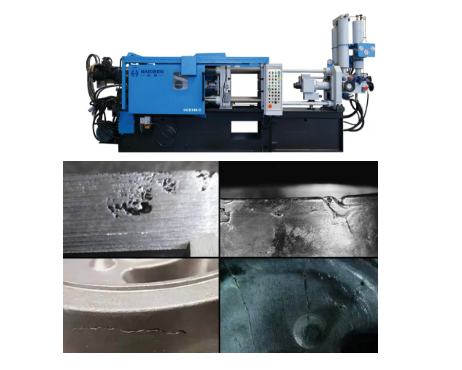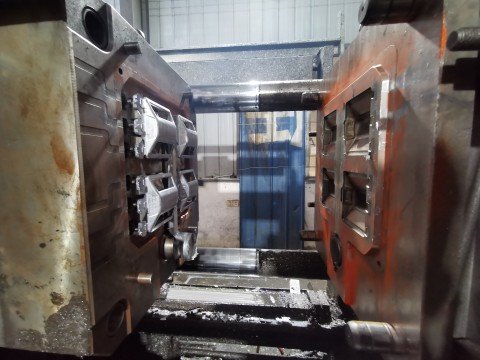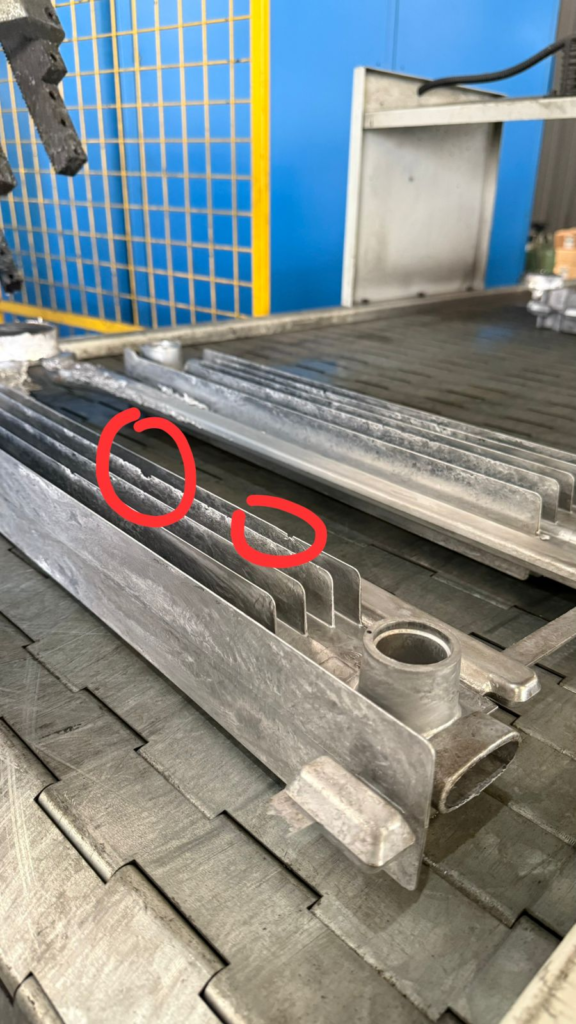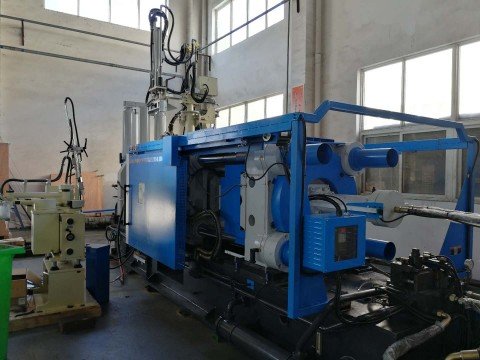Porosity in die casting is primarily caused by trapped air or gas within the mold cavity, improper gating and venting designs, insufficient compaction of the molten metal, and variations in the injection process such as speed and pressure.
Die casting is a highly efficient manufacturing process used to produce complex metal parts with tight tolerances. However, one of the most common defects encountered in die casting is porosity.
Porosity refers to the presence of small voids or cavities within the casting, which can significantly affect the part’s mechanical properties, corrosion resistance, and overall quality.
Understanding the causes of porosity is crucial for manufacturers to optimize their processes and produce high-quality castings.

Gas Porosity
Gas porosity is one of the primary causes of defects in die castings. It occurs when air or gas becomes trapped within the molten metal during the injection process. This can happen due to several reasons:
- Insufficient Venting: If the die cavity is not properly vented, air can become trapped and form bubbles within the casting. Effective venting systems are essential to allow air to escape as the metal fills the cavity.
- High Injection Speed: While high injection speeds are often necessary to fill the die quickly and avoid solidification, they can also increase the risk of entrapping air. Optimizing injection speed is a delicate balance between filling efficiency and minimizing porosity.
- Poor Die Design: Complex geometries and narrow sections in the die can create turbulence in the molten metal, leading to air entrapment. Proper die design, including the use of runners and gates, can help guide the metal smoothly into the cavity.
Shrinkage Porosity
Shrinkage porosity occurs when the molten metal solidifies and contracts, creating voids within the casting. This type of porosity is often more difficult to detect because it can occur deep within the part. Factors contributing to shrinkage porosity include:
- Inadequate Metal Supply: If the die is not adequately filled with molten metal, shrinkage cavities can form as the metal cools and contracts. Ensuring a sufficient supply of metal and optimizing the gate design are critical for preventing this issue.
- Non-Uniform Cooling Rates: Different sections of the casting may cool at different rates, leading to uneven solidification and shrinkage porosity. Using cooling channels in the die to control the cooling rate can help mitigate this problem.

Material Contamination
The presence of impurities or foreign materials in the molten metal can also contribute to porosity. Contaminants can create gas pockets or disrupt the solidification process, leading to voids. Proper material handling and purification processes are essential to ensure the metal is free from contaminants.
Die Maintenance
The condition of the die itself can significantly impact the quality of the casting. Worn or damaged dies can create areas where air becomes trapped or where metal flow is disrupted. Regular maintenance and inspection of the die are crucial for maintaining consistent casting quality.

How HAICHEN Die Casting Machines Can Help
HAICHEN, a leading manufacturer of die casting machines, offers advanced solutions to help minimize porosity in die castings.Our machines are designed with state-of-the-art technology to optimize injection speed, pressure control, and cooling efficiency. HAICHEN’s commitment to precision engineering ensures that their machines provide the highest level of control over the casting process, reducing the risk of porosity and other defects.

By understanding the causes of porosity, manufacturers can significantly improve the quality and reliability of their die cast products.



